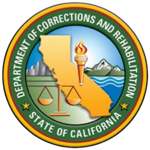Rancho Ex-Mission Soledad
1845 establishments in Alta CaliforniaRanchos (Salinas Valley)Ranchos of Monterey County, CaliforniaSpanish missions in California
Rancho Ex-Mission Soledad was a 8,900-acre (36 km2) Mexican land grant in the Salinas Valley, in present-day Monterey County, California. It was given in 1845 by Governor Pío Pico to Feliciano Soberanes.The grant derives its name from the secularized Mission Nuestra Señora de la Soledad, but was called ex-Mission because of a division made of the lands held in the name of the Mission — the church retaining the grounds immediately around, and all of the lands outside of this are called ex-Mission lands. The grant was adjacent Mission Soledad, west of the Salinas River and Soledad.
Excerpt from the Wikipedia article Rancho Ex-Mission Soledad (License: CC BY-SA 3.0, Authors).Rancho Ex-Mission Soledad
Fort Romie Road,
Geographical coordinates (GPS) Address Nearby Places Show on map
Geographical coordinates (GPS)
| Latitude | Longitude |
|---|---|
| N 36.41 ° | E -121.38 ° |
Address
Fort Romie Road 32601
93960
California, United States
Open on Google Maps





